Valentine Potion and Tasting Experiment
A Valentine potion and tasting experiment is a perfect science activity for Valentine’s Day! Kids will have fun making fizzy Valentine potions with fruit juice and then creating their own special fruit drink.
Valentine Potion and Tasting Experiment
You may already know that fruit juice reacts with baking soda similar to vinegar. {You know this if you’ve read any of these: Secret Messages with Baking Soda, Candy Hearts Ingredients Experiment, Baking Soda Science, or Christmas Mixtures and Play Dough.}
Did you know that some fruit juices change color depending on their pH? They are one color when acidic and another color when basic. Cherry juice, blackberries, and grape juice {especially blue grapes} are three that exhibit a similar color change. When in acidic conditions, they are red; when in basic conditions, they are blue or purple. We saw the best change with cherry juice, so let’s start there.
Materials needed:
- cherry juice
- baking soda
- vinegar
- clear glass or container for mixing
- spoon
- straw {optional}
Procedure:
- Add cherry juice to a clear glass {we used a tea goblet}.
- Make observations about the cherry juice. What color is it? What does it taste like?
- Add a 1/4 teaspoon {small amount} of baking soda to the cherry juice. Stir.
- Make observations about the cherry juice now. What happened? What color is it now? What does it taste like now {just a sip}? **The cherry juice with react with the baking soda. You will see bubbles, the juice will turn purple, and the taste will most likely be a bit saltier. Don’t put too much baking soda or it will taste unpleasantly salty.
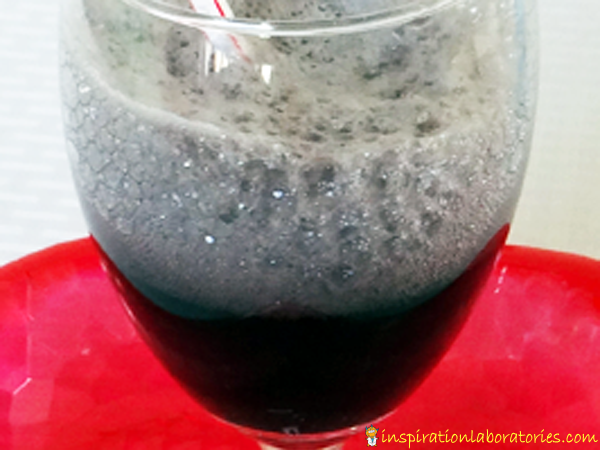
- Add a splash or two of vinegar to the cherry juice. Stir.
- Make a third set of observations. What happened? What color is it now? What does it taste like now {just a sip}? **The baking soda in the cherry juice with react with the vinegar. You will see bubbles, the juice will turn red (at least the bubbles at the top will be red), and the taste will be a saltier and more sour. Don’t put too much vinegar or it will taste unpleasantly salty and sour.
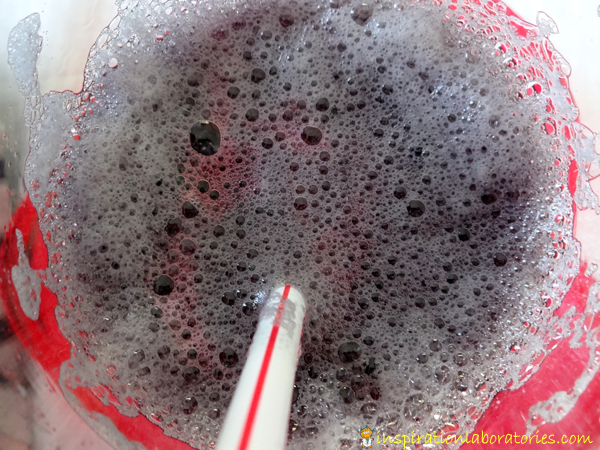
We repeated the experiment with regular grape juice. Blue grapes are supposed show a more drastic color change than red or purple grapes. I’m not sure what kind of grapes were in the grape juice, but it had a reddish purple hue to start. We added vinegar and it seemed to get more red. We added baking soda and it turned darker purple. {The color changes were very slight.}
Next, we tried it with blackberries. I smashed up some blackberries and had a little bit of juice in a container. Aiden added baking soda. You could see some purple bubbles. Then, he added vinegar. The bubbles were red this time.
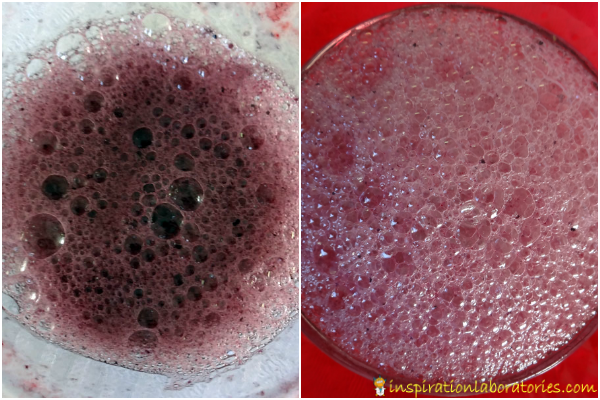
Make Your Own Fruit Drink
Making your own fruit drink is equally as fun as the fizzy Valentine potion although it won’t be fizzy. You could always use some sparkling grape juice to get a little fizz.
Here’s what you need:
- various fruit juices {we used cherry juice, grape juice, and orange juice}
- glass/cup to mix the drink
- a container for each fruit juice
- straw {optional}
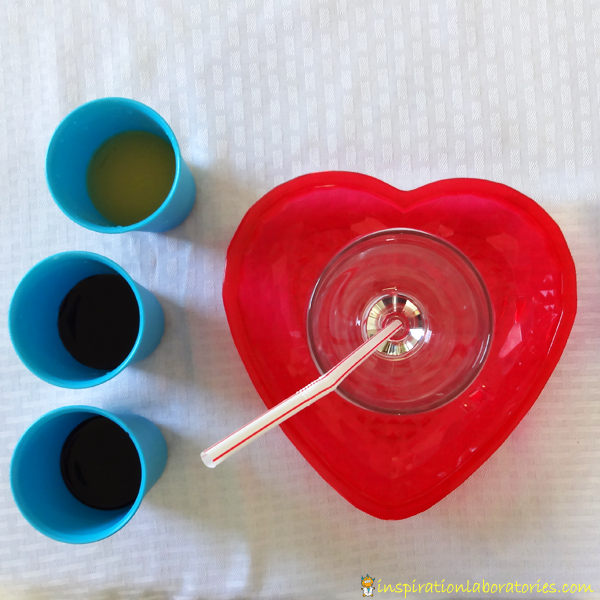
Set out containers with each fruit juice. Explain to your child they he will be creating his own drink. Have him taste each fruit juice before mixing anything together. I had Aiden tell me the name of each juice. Then, allow your child to pour the juices together. Ask her if she will use a little or a lot of each juice. Maybe try a little, stir it up, and taste it. Each time a new juice is added, have your child taste the concoction. How does the flavor change from one addition to the next?
Have fun mixing and making potions! For another level of fun, try making a layered drink by knowing a little about the density of fruit juices. Check out the Layering Liquids Density Experiment for the how-to.
More Valentine’s Day Ideas
- Check out all of our ideas for Valentine’s Day science experiments.
- Give baking soda and vinegar a Valentine’s Day theme with this frozen vinegar hearts idea. {Our most popular Valentine’s science idea.}
- Look through our past Valentine’s Day ideas here.
Connect with Inspiration Laboratories on Twitter, Google+, Pinterest, or Facebook . You can also subscribe to posts by e-mail.
Linking up here.

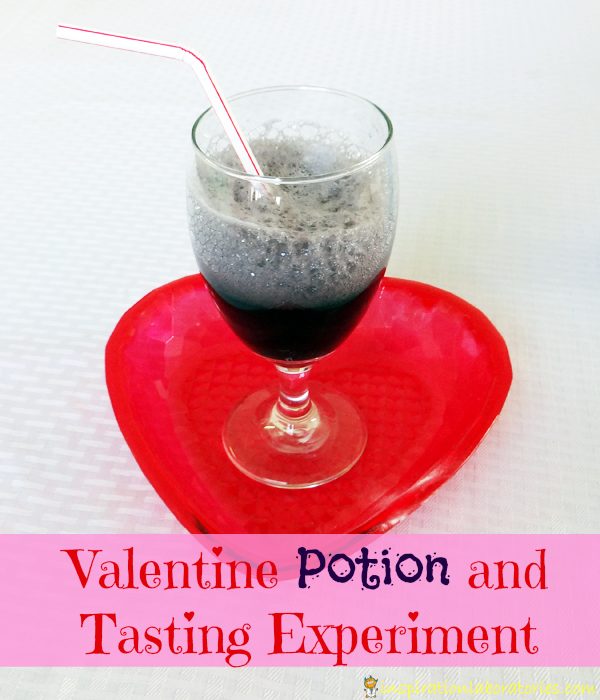
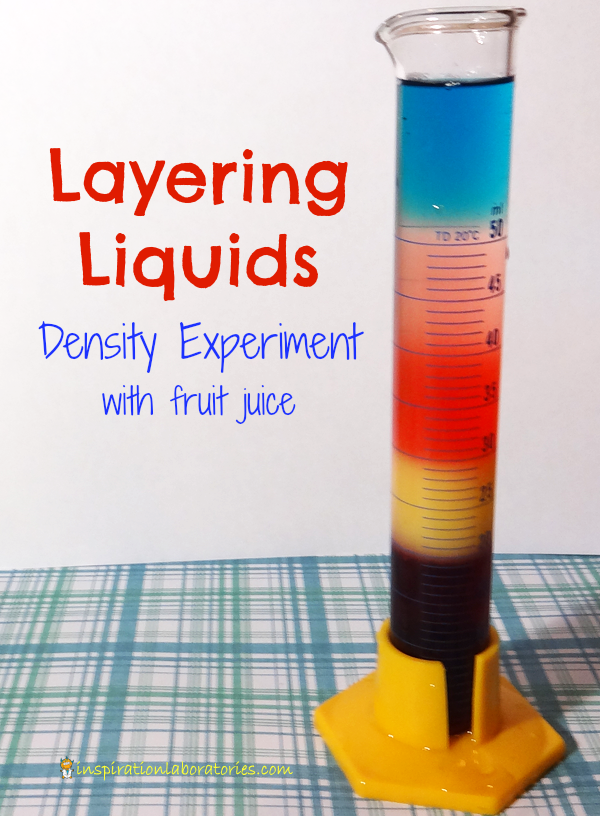
Leave a Reply